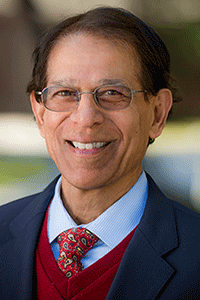Study of Loneliness in a Senior Housing Community Points to Risk and Potential Protective Factors
Study of Loneliness in a Senior Housing Community Points to Risk and Potential Protective Factors

At a moment when protective measures such as “shelter-in-place” and “self-quarantine” have become commonplace in many of the world’s major cities, a newly published study on loneliness sheds light on a phenomenon that many millions of people experience even in the absence of the enforced isolation imposed by a public health crisis like the COVID-19 viral pandemic.
Researchers at the University of California San Diego, co-led by 2017 BBRF Young Investigator Ellen Lee, M.D., and senior team member Dilip Jeste, M.D., a member of the BBRF Scientific Council and 2002 Distinguished Investigator, closely studied a subset of 30 residents of a housing community providing different levels of care to a large number of senior citizens. Drs. Lee, Jeste, and colleagues pointed to a substantial literature indicating the existence of what they call “a public health epidemic of loneliness with serious physical and mental health implications.” In past research, some researchers of loneliness have equated the potential life-shortening impact of loneliness with that of smoking and obesity.
The San Diego investigators make clear that loneliness is a “subjective” state—something that some people living under similar conditions feel, often acutely, while others do not, or feel hardly at all. Loneliness, in other words, ought not to be confused, they say, with social isolation, an objective condition in which an individual does not have ready access to the company of others, whether because of illness, geographical location, or, as is sometimes the case with older people in particular, the loss of one’s spouse and, as the years pass, an increasing number of one’s cherished friends and companions.
The team wanted to know more about the experience of people over age 65 who say they are lonely despite the fact that they are surrounded in their senior living community with many other people their age and are supplied with an extensive range of voluntary participatory activities organized by the staff that runs and manages the community. This setting is important, they stress, since older adults in ever greater numbers are moving into such communities as the U.S. population and that of other industrialized nations ages.
The group of 30 study participants at the focus of the study were aged 67-92, with a mean age of about 82. Each was living independently within the community—not receiving assisted care. About two-thirds were women, and 90% were Caucasian and had attended college. None was socially isolated, since their community offered not only proximity to others including shared common areas, but also access to planned social outings, organized community activities and even transportation to off-site activities like attending the theatre.
In the group of 30, 15% reported no or little loneliness, 63% moderate loneliness and 22% a high degree of loneliness. These results were comparable, the team said, with those from a larger sample of the same community numbering 70 additional residents. Those who said they did feel lonely offered reasons that were expected: the deaths of partners, family and friends as well as the loss of physical health with aging. In terms of their subjective experience, some of the respondents reported feeling helpless and powerless, “highlighting how the social disconnectedness left them vulnerable,” the researchers reported. Many reported feeling “alienated” from those in their community, despite their physical proximity.
What is perhaps most valuable about the study is the set of insights about how some study participants managed to avoid or overcome feeling lonely. These clustered around a concept that researchers studying the question have termed “wisdom.” It involves learning to accept aging-related changes, whether due to loss of loved ones or one’s health. Other qualities conferring an ability to endure or reduce risk of being disabled by loneliness included the ability to be compassionate toward others, the willingness to seek out or accept the companionship of others, and an openness to taking part in community activities.
The team, which also included 2001 BBRF Young Investigator Barton Palmer, Ph.D., found an inverse relationship between loneliness and “wisdom” traits: “emotional regulation with positivity,” “decisiveness,” and an inclination to reflect on one’s feelings and living conditions—“self-reflection.” The study participants without these traits were more likely to experience loneliness, while those who had them were less likely.
According to the researchers, it may be possible to encourage these qualities by developing programs that promote the components of the “wisdom” concept. This might be accomplished by counseling or coaching that helps enhance those traits.
Controlled studies are called for, the team said, to test their theory about “wisdom” and the ability to reduce loneliness. Such studies would also need to test the concept and the current study’s findings in a more diverse population.




